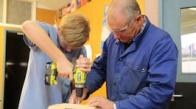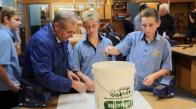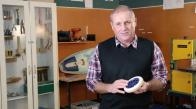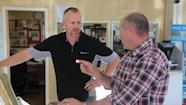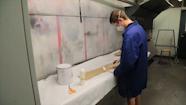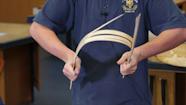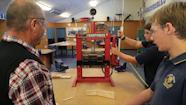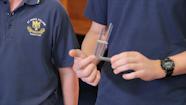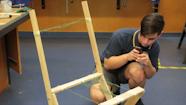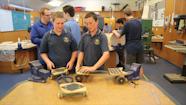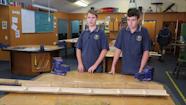Steve Andrew shares how students identify material specifications in a brief and then test materials to find those that are suitable.
Finding materials to meet the specs
Transcript
It’s really important in our school that we give our students these practical experiences. And the using of the technological products or the reading of them and the playing with them we found is so important.
When we move on to applying this sort of thinking to our projects, we generally work from a brief. We try and identify some basic material specifications in our brief. That gives our practice depth. And from then on we keep those material specifications in mind, which could be things like the environmental resistance of the material, or the strength of the material, or the colour of the material. And we keep that in mind, and then we just get a selection of materials for our boys to play with.
So, once again, it's this tactile thing where they’ve got them in their hands – we let them drill holes in them, we let them bend them. They come and ask us questions about them – “Sir can I bend this?” And at times I might say, “Well, I’m not too sure. You go and try it and come back and tell me what the answer is.”
The technology curriculum, the teacher guidance notes in there actually promote this sort of teaching – the hands-on experimenting with materials, drilling holes, bending, breaking, playing with the stuff. They enjoy that. They learn so much. They learn about the material, they learn how they can manipulate it, and at times they even come back with information that is new to me as well. So I think that’s really important.
These learning experiences, especially at junior level, they generally only last for about a period. They’re not too involved and they go away in groups and they do these and then they write them up. So, for instance, if they are playing with aluminium, they’ll come back to me and they’ll say, “Sir, the aluminium’s nice and soft, I can bend it easy, I can drill it easy, we can put texture on it.” So they write these things down so they’ve got a record of that to use in their practice when they are developing their product.
Once they’ve learnt about those materials, then they can start to apply that knowledge that they’ve learnt to the making of their project. Because if, say for instance the weather station that they make, if they know that they can cut fine shapes in it, or they can polish the edge of it, or they can, they can put texture on it, then it’s going to improve the quality of the product that comes out. And you know that is to me much deeper learning than just handing them the materials and saying, “We’re going to use this today because it’s got a smooth surface on it.” But by them having a total understanding of what we can do with, it gives them this depth of understanding for their project.
Related videos
Combining knowledge and practice (01:58)
Steve Andrew explains how understanding materials is essential for effective technological practice.
Linking hands-on experiences and understandings (03:54)
Hands-on experiences allow the students to see materials understandings in action.
Play, experiment, explore (02:55)
Steve Andrew lets the students see, feel, and play with products to develop their understandings in materials.
School–industry relationship cuts both ways (03:36)
Steve Andrew and Terry Rillstone describe the way the relationship between St John's College and The Shop has benefits for them both....
Pushing the boundaries with materials (02:53)
Steve Andrew describes how his senior students have the confidence to select and work with unfamiliar materials.
Exploring unfamiliar materials (02:44)
Year 12 students from St John's College describe what they know about bamboo and how they are applying this knowledge to their projects....
Students and teachers talk about testing materials in year 11.
Manipulating, forming, and transforming
Students in year 10 describe manipulating, forming, and transforming materials.
Evaluating materials for an outcome
Steve Andrew and students talk about using their knowledge to test materials for their projects at year 12.
Year 10 students describe some of the attributes for the snake skates they are developing.
Senior students select their own issues
Year 12 students talk about the issues that they have selected for their projects.

